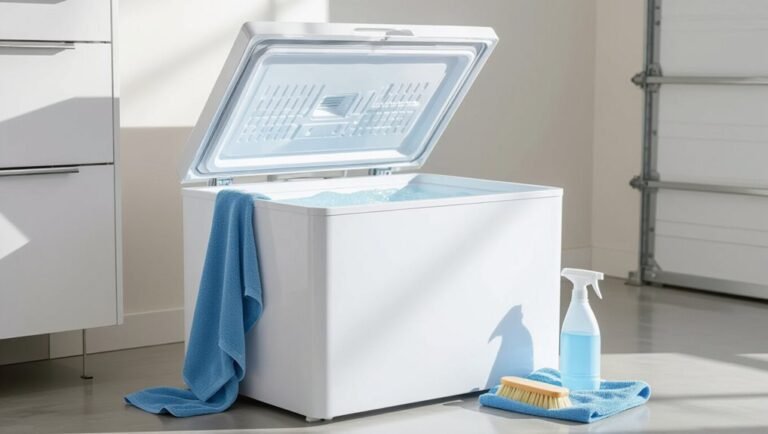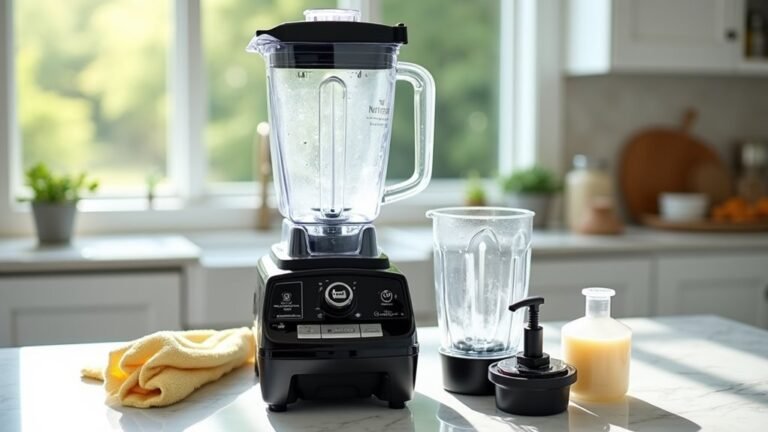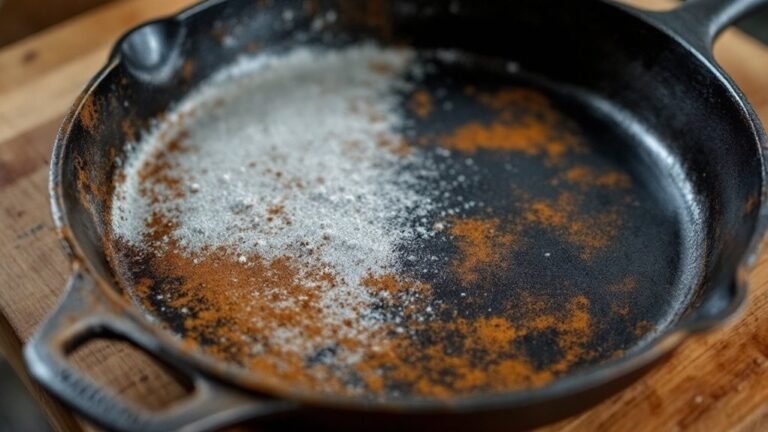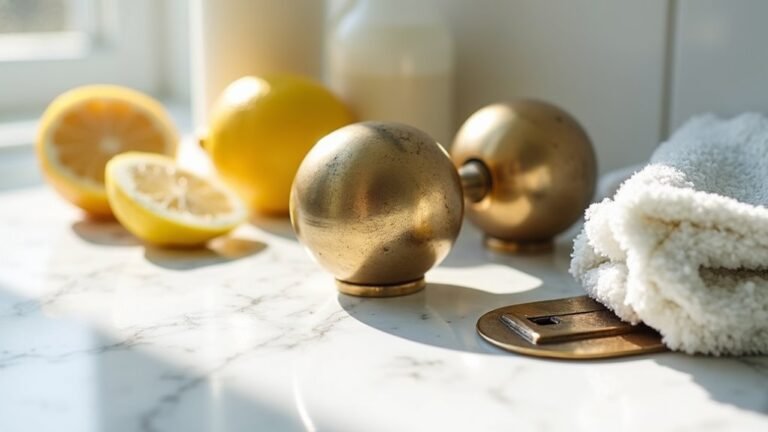A clean heater helps keep your home warm and your energy bills low during cold weather. Just like any appliance, heaters need regular cleaning to work their best and stay safe. When dust and dirt build up, your heater has to work harder, which wastes energy and could be dangerous.
Some of the links in this article may be affiliate links. If you make a purchase through these links, we may earn a small commission at no extra cost to you. Thank you.
According to John Furnival, technical director at the Heating and Hotwater Industry Council (HHIC), "Regular maintenance of heating systems not only helps prevent breakdowns but can reduce energy consumption by up to 15%."
Different heaters need different kinds of cleaning:
Space Heaters:
- Turn off and unplug the heater
- Dust the outside with a soft cloth
- Clean vents with a vacuum brush
- Wipe metal parts with a damp cloth
Baseboard Heaters:
- Turn off the power
- Remove dust with a vacuum
- Wipe the fins with a damp cloth
- Clean behind the unit
Safety Tips:
- Always let heaters cool before cleaning
- Never spray cleaners directly on the heater
- Keep water away from electrical parts
- Check for loose wires or damage while cleaning
Cleaning your heater once a month during heating season will keep it running safely and cut down on wasted energy. If you smell burning or see any damaged parts, call a professional right away.
Keep Your Home Warm

When winter approaches, keeping your heater clean and well-maintained is crucial for maintaining a cozy, warm home.
We recommend regular cleaning of your heating system to guarantee peak performance throughout the cold season. By vacuuming vents and replacing the air filter regularly, we'll help prevent dust buildup that can reduce efficiency.
Don't forget professional maintenance checks for maximum warmth and safety.
##
Let's look at how we can clean our heaters safely and effectively to keep them running at their best.
We'll cover both essential maintenance steps you should take and common mistakes to avoid, ensuring your heater stays in top condition throughout the heating season.
From basic dusting to deep cleaning, we'll show you exactly what to do, when to do it, and how to maintain your heater's performance for years to come.
Things to Do When Cleaning a Heater
Proper heater cleaning is essential for maintaining peak performance and guaranteeing safety in your home. Regular cleaning not only extends the life of your heating unit but also helps prevent potential fire hazards and maintains efficient heat distribution throughout your space. A thorough cleaning process removes dust, debris, and other particles that can accumulate over time and impact the heater's functionality.
- Unplug the heater – Disconnect from power source and allow unit to cool completely before starting any cleaning work.
- Prepare cleaning supplies – Gather microfiber cloths, vacuum with brush attachment, mild detergent, and necessary tools for disassembly.
- Remove exterior dust – Use dry microfiber cloth to wipe down all outer surfaces and remove loose debris.
- Clean vents and grilles – Utilize vacuum with brush attachment to remove dust from all openings and air passages.
- Disassemble if needed – Remove cover carefully following manufacturer instructions to access internal components.
- Clean interior components – Wipe internal parts with slightly damp cloth and mild detergent solution.
- Dry thoroughly – Confirm all parts are completely dry before reassembly to prevent electrical issues.
- Reassemble unit – Put all components back together properly, checking that everything is secure.
- Final inspection – Examine unit for any remaining dirt or damage before returning to service.
- Document maintenance – Record cleaning date and any issues found for future reference.
Things to Avoid When Cleaning a Heater
Cleaning a heater requires careful attention to avoid damaging the unit or creating safety hazards. When maintaining your heater, it's crucial to follow proper cleaning protocols and be mindful of potential risks that could compromise the appliance's functionality or create dangerous situations.
- Using cotton materials or cloths that shed – Loose fibers can become trapped in heating elements and components, creating fire hazards and reducing efficiency.
- Applying excessive water or cleaning solutions – Liquid can damage electrical parts and create shock risks when the unit is plugged in.
- Cleaning while the unit is operating – This creates burn risks and electrical hazards from contact with hot or powered components.
- Skipping air filter maintenance – Clogged filters restrict airflow, forcing the heater to work harder and potentially overheat.
- Using abrasive cleaning tools – Wire brushes, rough sponges, or harsh scrubbers can scratch surfaces and damage protective coatings.
- Spraying cleaners directly into the unit – Chemicals can corrode internal parts and leave harmful residues that release fumes when heated.
- Working with plugged-in equipment – Always unplug the heater first to prevent electrical accidents during cleaning.
- Rushing through the cleaning process – Hasty cleaning can lead to missed areas and potential safety issues from improper reassembly.
Steps
Keeping your heater clean is essential for maintaining its efficiency and guaranteeing safe operation throughout the heating season.
Regular cleaning helps prevent dust buildup, reduces fire hazards, and extends the life of your heating unit while providing peak warmth for your space.
Step 1: Unplug the heater and let it cool completely for 15-30 minutes
Step 2: Use a vacuum cleaner with a brush attachment to remove dust from exterior vents and grilles
Step 3: Dampen a microfiber cloth with mild cleaning solution and wipe down all exterior surfaces
Step 4: Clean buttons, knobs, and control panels, guaranteeing no moisture seeps into electrical components
Step 5: Remove the front cover if possible, following manufacturer instructions
Step 6: Carefully vacuum or brush the interior components to remove dust buildup
Step 7: Allow all parts to dry completely before reassembling
Step 8: Plug in and test the heater to guarantee proper operation
Final Thoughts
Maintaining your heater's cleanliness isn't just about following steps – it's about creating a safer, more efficient home environment.
Regular internal cleaning guarantees proper air flow and prevents dangerous overheating issues.
We recommend setting up a cleaning schedule and storing your heater properly during off-seasons.
##

Keeping your heater clean is a simple yet essential task that protects your investment and guarantees safe, efficient heating throughout the cold season.
Regular exterior cleaning coupled with annual professional maintenance will extend your heater's lifespan and prevent potential hazards. While it may seem like another household chore to add to your list, the benefits of maintaining a clean heater far outweigh the minimal time investment required.
A well-maintained heater isn't just cleaner – it's safer and more efficient, making the small investment of time worthwhile.
Take action today by establishing a weekly cleaning routine during heating season.
Mark your calendar for professional maintenance checks, and always prioritize safety by following proper cleaning procedures.
With proper care, your heater will provide reliable warmth and comfort for years to come.






